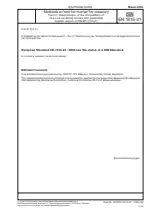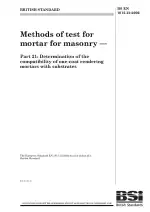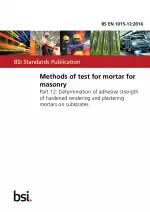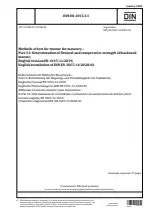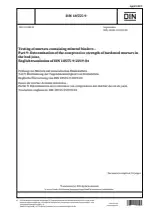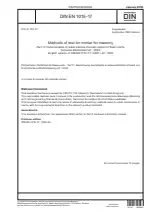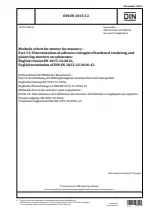Methods of Test for Mortar for Masonry - Part 21: Determination of the Compatibility of One-Coat Rendering Mortars with Substrates
Also Known As:
The DIN EN 1015-21 standard is a method of testing the compatibility of one-coat rendering mortars with substrates. Specifically, this standard focuses on evaluating the adhesion strength and water permeability of these mortars when applied to defined substrates and exposed to weathering cycles. The purpose of this test is to determine whether the rendering mortar has sufficient compatibility and durability to withstand various environmental conditions.
The test involves applying the one-coat rendering mortar to specified substrates and subjecting them to a series of weathering cycles. After the cycles are completed, the adhesion strength and water permeability of the hardened render are measured. These properties are crucial for assessing the performance and suitability of the mortar for masonry applications.
The DIN EN 1015-21 standard provides a standardized procedure for conducting these tests, ensuring consistency and comparability of results. By following this standard, manufacturers, contractors, and other stakeholders can determine the compatibility of one-coat rendering mortars with substrates, enabling them to make informed decisions regarding product selection and application.
| Descriptors | Adhesion, Adhesive strength, Bearings, Brickwork, Checking equipment, Compatibility, Construction, Construction materials, Determination, Fundamental quantity, Hardened mortars, Masonry, Masonry mortars, Measurement of humidity, Moisture, Mortar composition, Mortars, Plasters, Sampling methods, Specimen preparation, Stuffs, Subsoil, Test pieces, Test specimens, Testing, Testing devices, Water permeability, Water vapour permeability, Weather, Weathering, Liability, Storage, Sample preparation, Water vapour transmission |
| ICS Codes | 91.100.10 - Cement. Gypsum. Lime. Mortar |
| Language(s) | English |
| File Size | 307.2 KB |

